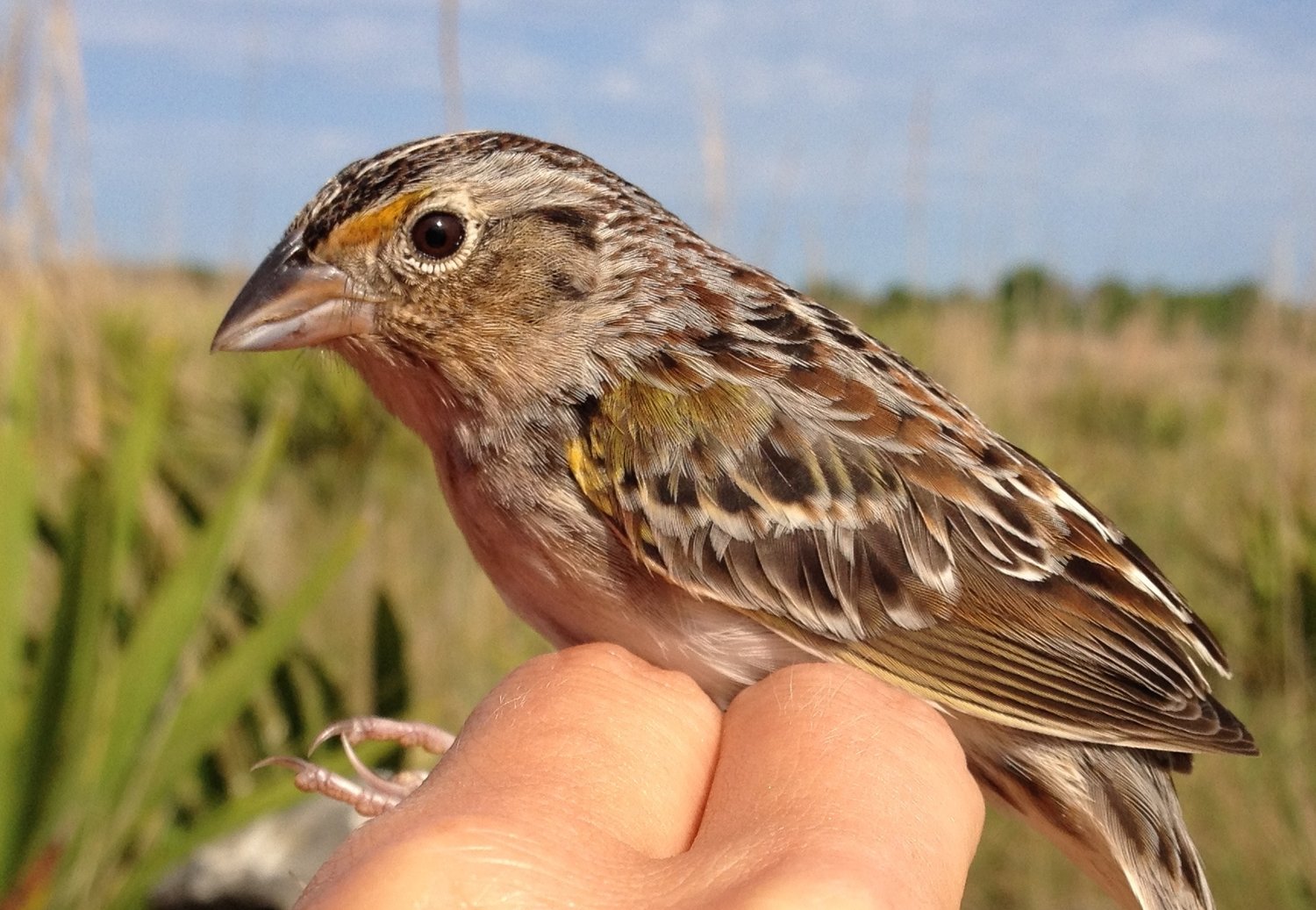It was not the most dramatic animal release of all time, but it was a dramatic milestone for one of North America’s most endangered birds. On June 1, the 501st grasshopper sparrow completed its journey from White Oak Conservation with 12 friends, flew out of its enclosure and joined its fellow birds in the wild of the central Florida prairie.
Florida grasshopper sparrow populations were on the decline prior to 2019 due to habitat loss, among other factors. Without intervention, the extinction of these tiny birds was a real possibility. In response, the Florida Fish and Wildlife Conservation Commission (FWC), U.S. Fish and Wildlife Service (Service), White Oak Conservation, the Fish & Wildlife Foundation of Florida (Foundation) and partners have collaborated on a multipronged strategy including a conservation-recovery and release program to bring them back from the brink.
The first releases took place in May 2019 and since then the wild Florida grasshopper sparrow population has increased. A year following the first release, biologists detected released birds successfully pairing and breeding with wild Florida grasshopper sparrows. In 2021, biologists confirmed that some offspring produced by released birds had become breeders themselves. During both the 2020 and 2021 breeding seasons, 65% of the young that were produced in the wild at the release site came from nests that had at least one parent that was part of the recovery program. From 2019 to 2021, biologists have seen an 84% increase in the sparrow population at the original release site.
“Along with other important conservation measures, such as habitat management and nest protection, the conservation-recovery and release program has had a clear positive impact on the Florida grasshopper sparrow population at the release site,” said Juan Oteyza, lead sparrow research scientist at the FWC’s Fish and Wildlife Research Institute. “We are incredibly happy with these results but Florida grasshopper sparrows are still critically endangered and therefore we must stay committed to our conservation efforts to create a more resilient population.”
Since 2012, the Service, the FWC, White Oak Conservation and the Foundation have dedicated significant financial resources and personnel to the recovery of the Florida grasshopper sparrow, including proceeds from the Foundation’s “Conserve Wildlife” license plate.
“We are excited about the progress the program has been making over the past few years,” said Mary Peterson, endangered species recovery biologist for the Service. “Many of the lessons we have learned with the Florida grasshopper sparrow could be applied to other Florida imperiled species, such as the endangered Cape Sable seaside sparrow, or other grassland birds.”
The program has grown in recent years, including other conservation breeding facilities, including the Avian Preservation and Education Conservancy, Brevard Zoo, as well as support from the Welaka National Fish Hatchery. In 2021 the program’s expansion included the release of 99 sparrows from these partners at a second site, where partners are starting to see positive results.
In addition to the success of the conservation breeding and release program, crucial habitat for the birds was conserved recently. With 6,000 acres of sparrow habitat, the DeLuca Preserve in Osceola County has one of the largest known breeding populations of Florida grasshopper sparrows.
“This is a once-a-generation gift of land, 27,000 acres,” said Foundation president and CEO Andrew Walker. “Conserving this land was a key component in pulling the Florida grasshopper sparrow back from the brink of extinction.”
This is a collaborative effort, partners include the Florida Fish and Wildlife Conservation Commission, U.S. Fish and Wildlife Service, Fish & Wildlife Foundation of Florida, White Oak Conservation, Archbold Biological Station, Florida DEP – Kissimmee Prairie Preserve State Park, Department of Defense – Avon Park Air Force Range, Avian Preservation and Education Conservancy, Audubon Florida, Brevard Zoo, Santa Fe Zoo, Tall Timbers Research Station, the University of Florida, the University of Maryland – Baltimore County, Alan Lieberman, retired, San Diego Zoo, Welaka National Fish Hatchery and the University of Central Florida.














